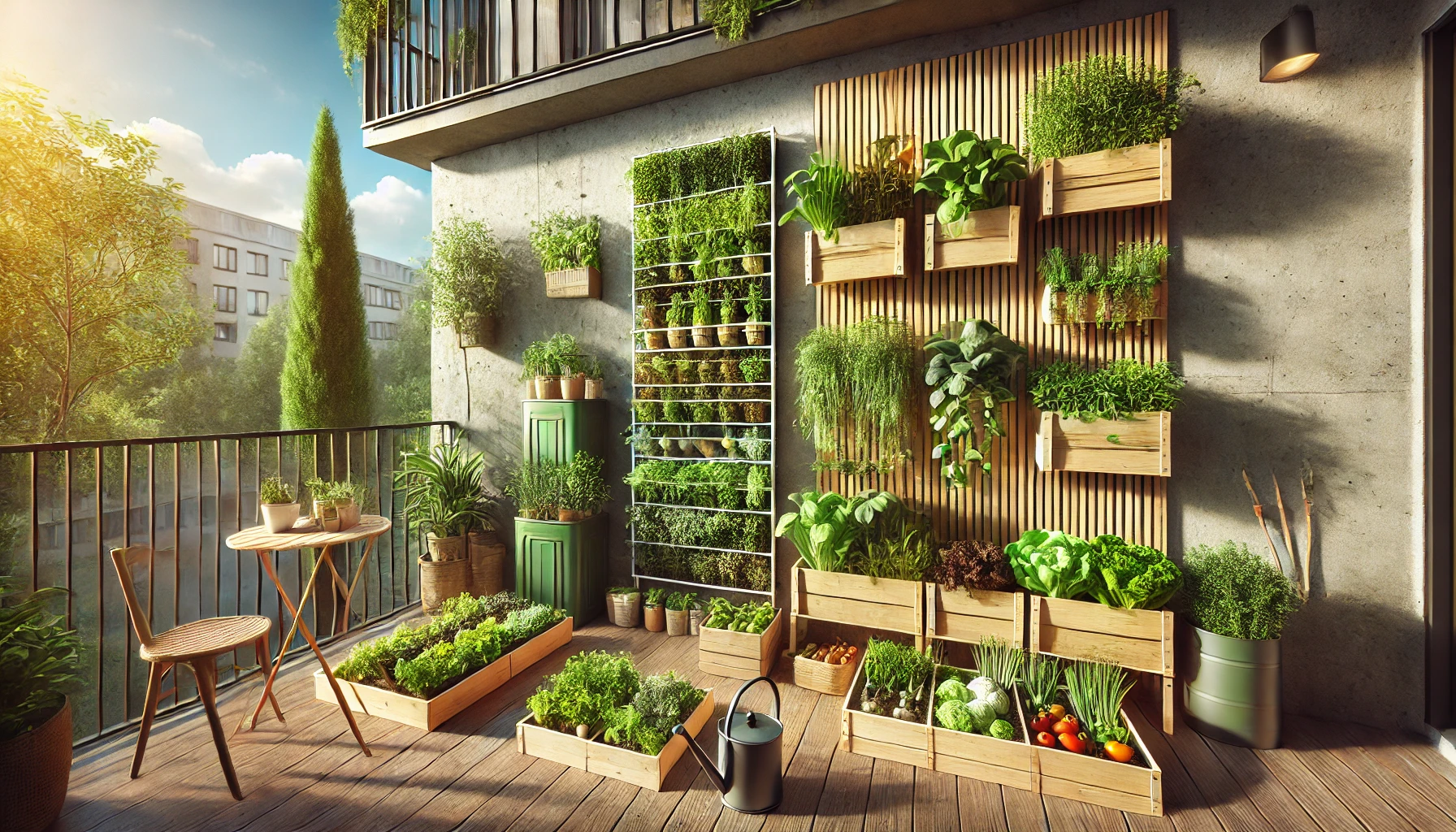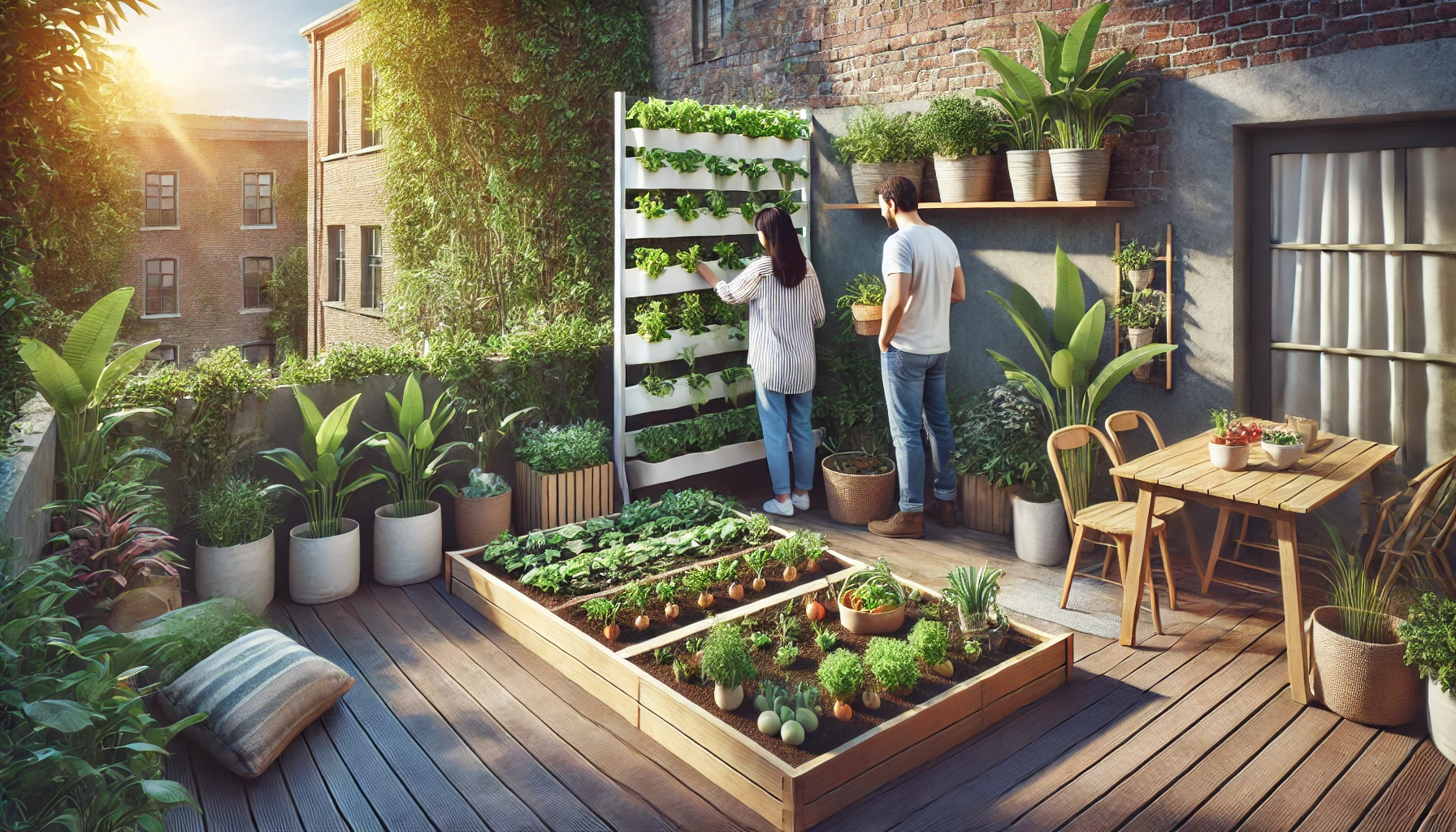Vegetable Gardening Tips For Small Spaces can transform even the tiniest balcony or that cramped backyard into a bountiful oasis. Think about it: just because your space is limited doesn’t mean your harvest has to be.
Small space gardening is a bit like magic. You’re turning ordinary corners into places bursting with fresh produce. The beauty of it is while we’re often stuck thinking you need acres to grow the good stuff, city dwellers and those with smaller yards are proving otherwise.
Why the fuss about small space gardens? It’s not just about fresh salads any day of the week. This approach supports sustainability, reduces your carbon footprint, and lets you know exactly where your greens are coming from.
Not to mention, there’s something downright satisfying about picking a crisp cucumber from your own plant. Whether you’re using containers, raised beds, or creatively using vertical spaces, every bit counts.
Got limited time or experience? No worries. Small gardens are manageable and can still yield surprising amounts of produce, making them perfect for beginners or those who just want a hobby that’s easy to handle.
How to Grow Lots of Vegetables in a Small Space
Growing loads of veggies in cramped quarters isn’t just a pipe dream. With a little creativity and some know-how, it’s totally doable.
Vertical gardening is your best friend. Think towers of pots, shelves along walls, or even hanging planters. You’re essentially stacking your growing area upwards, making it a great trick for limited square footage.
Staggered planting is another ace up your sleeve. By sowing seeds at different times, you maximize harvest periods and keep your garden productive throughout the seasons. It’s all about using every inch efficiently.
Containers and raised beds don’t just look neat; they’re game changers. They let you control soil quality and conditions, which is a big win when ground space is at a premium. Plus, they can be moved around to catch the best sun spots.
Planning is critical here. Before you plant, figure out what you really consume a lot of. Focus on high-yielding plants and ones that bear fruit or veggies multiple times a season, like peppers, tomatoes, and kale. This ensures you’re getting the most from your limited patch.
Optimal Layouts for Small Vegetable Gardens
Let’s chat about layouts that really make every inch count. Designing your garden smartly can mean the difference between a few scattered veggies and a mini harvest explosion.
Square foot gardening is a gem here. This technique divides your plot into small, manageable grids that are each a foot square. You plant different veggies in each square, optimizing space and keeping it all organized. It’s perfect for small spaces and great for beginners too.
Pathways are essential, even in tiny plots. Narrow ones will do, just enough for you to reach every plant. You want to avoid compacting the soil where your veggies are growing – so make sure you can maneuver around!
Instead of long rows, think blocks. Blocks are efficient and allow for larger crops in the same space. Plus, they make better use of water and sun exposure angles.
Design your garden with plant size in mind. Place taller plants like tomatoes towards the back or north side, and shorter ones like radishes at the front. This way, nobody’s blocking the sun from anybody else.
Add in a few hardy herbs or climbing veggies like peas and beans. They can share space with other plants yet still head upwards, making them perfect partners in a packed garden layout.
Methods to Grow More Food in Limited Spaces
When space is tight, every technique counts in maximizing your harvest potential. Succession planting is a savvy method that lets you continuously plant new seeds as soon as a previous crop is harvested. This way, your garden’s always active and producing.
Companion planting isn’t just about keeping pests away; it’s also about cooperation. By planting certain veggies together, you can enhance growth and yield because they help each other out in different ways. For example, pairing beans with corn can result in taller, stronger corn stalks.
Integrating edible perennials into your garden means you can have plants that keep giving season after season with little work. Think asparagus or rhubarb, which fit perfectly in small spaces while continuously contributing to your harvest, year after year.
Even in small gardens, maximizing produce isn’t just for veggies alone. Interspersing fast-growing leafy greens, like lettuce or spinach, between slow-growing crops keeps space productive.
Having a plan is vital. Rotate crops to keep the soil healthy and tackle pests naturally. Plus, keep an eye on your sunlight; ensure that you’re making the most of every ray by knowing where it hits throughout the day.
Best Companion Vegetables for Small Gardens
When you’re planting in tight quarters, getting the right veggie buddies together can really boost your garden’s health and output. It’s all about strategic partnerships that keep everything thriving.
Companion planting means placing plants together that benefit each other, and it’s a nifty way to squeeze more out of your space. Some combinations can repel pests naturally, while others can enhance growth because of various symbiotic interactions.
Take tomatoes and basil, for example. It’s not just a classic food pairing, they’re great in the garden too. Basil can deter insects that might attack your tomatoes, and in return, gets some shelter from those tall, sun-loving tomato plants.
Carrots and onions are also a match made in heaven. Since they occupy different growing levels – carrots spread deeper while onions stretch out near the surface – they don’t compete for the same underground real estate.
Leafy greens like lettuce and spinach work well with taller plants. Their low profile allows them to fit snugly between taller veggies, maximizing ground use while benefiting from a bit of shade.
Savvy planting or using this method can mean less work in keeping pests at bay and healthier plants overall, leading to more food from the same small area. Think of it as setting up a community where everyone gets along and looks out for each other.

Innovative Gardening Techniques for Small Spaces
In tiny spaces, thinking outside the pot opens up exciting possibilities. One of the most dynamic ideas is hydroponics, where plants grow directly in nutrient-rich water instead of soil. It’s a clean, efficient way to grow herbs and leafy greens right on your windowsill.
Aquaponics goes a step further, combining fish farming with hydroponics. The fish waste provides an organic nutrient source for the plants, which in turn clean the water for the fish. This symbiotic system maximizes space and minimizes waste, making it a perfect fit for small-scale gardeners who want to mix it up.
Herbs and dwarf veggie varieties are a small garden staple. Compact breeds of your favorite plants take up less room but don’t skimp on yield. Dwarf tomatoes, mini peppers, and petite eggplants are productive and conveniently sized for small areas.
On-the-fly creativity leads to awesome DIY solutions. Recycle old bottles, bags, or even shoes as planters. This not only adds a quirky charm but also utilizes vertical spaces effectively.
With these techniques, you’re not just growing food – you’re creating a striking, efficient, and productive green space. These innovative methods can really make a small space work in big ways.
Conclusion and Summary Tips
Remember, having limited space doesn’t limit your options when it comes to growing veggies. Every corner and crevice of your space holds potential. With vertical gardens, smart companion planting, and innovative layouts, your small space can produce more than you ever imagined.
Think about how rewarding it is to pick fresh herbs from your windowsill or harvest a handful of cherry tomatoes from your balcony jungle. These moments bring the joy of gardening right into your home, no matter the size.
For those just dipping their toes into gardening, start with herbs and easy-grow veggies like lettuce or radishes. They’re forgiving, don’t require tons of space, and give you a taste of success right away.
Don’t forget the resources at your fingertips. Gardening apps can help you plan layouts and remind you when to plant, water, or harvest. Community gardens or local gardening clubs are great for exchanging tips and experiences. There’s always more to learn and new techniques to try.
No matter what kind of space you’re working with, remember that gardening is about experimenting and enjoying the process. It’s a chance to connect with nature, right where you live.


Your article about Vertical Hydroponic Vegetable Gardening was very interesting. I did not know much about that type of gardening. I feel much more educated just in that one detailed article. I am now imagining starting with a horizontal salad right in my own dream kitchen some day. It would be so neat to be able to go right to my indoor Hydroponic garden and harvest a salad just before dinner. That would be so rewarding to do that. It is great that a person could create it according to their individual likes. I love creativity and learning new things. This is something I would love to try. Of course, I would start small, as advised in the article. What do you think about the way we purchase vegetable produce in the grocery stores these days? Do you believe these Hydroponic Vegetable gardens are a good way to preserve more nutrients in our vegetables? Do you think it would be a great way to reduce a lot of the pesticides being used on the foods we buy in stores? The article did say that the plants could still have challenges with diseases and pests, but I think with a lot of practice, that could be reduced in more natural ways.
Thank you so much for your thoughtful and enthusiastic response! I’m thrilled that the article sparked your interest in vertical hydroponic gardening and inspired you to imagine creating your own indoor garden. It truly is a rewarding and creative journey, and starting small, as you mentioned, is the perfect way to begin.
You raise some great points about grocery store produce. The convenience of having fresh, homegrown vegetables not only allows for more control over nutrient preservation but also minimizes the use of harmful pesticides. Hydroponic systems can certainly provide a cleaner and more sustainable alternative. While, as the article noted, pests and diseases may still present challenges, with proper care and natural remedies, they can often be managed without resorting to chemicals.
I think your dream of harvesting a fresh salad from your own indoor garden is entirely achievable, and it’s exciting to hear that you love learning and embracing new creative ventures. Let me know if you decide to take the plunge—I’d be happy to provide tips or answer any questions along the way!